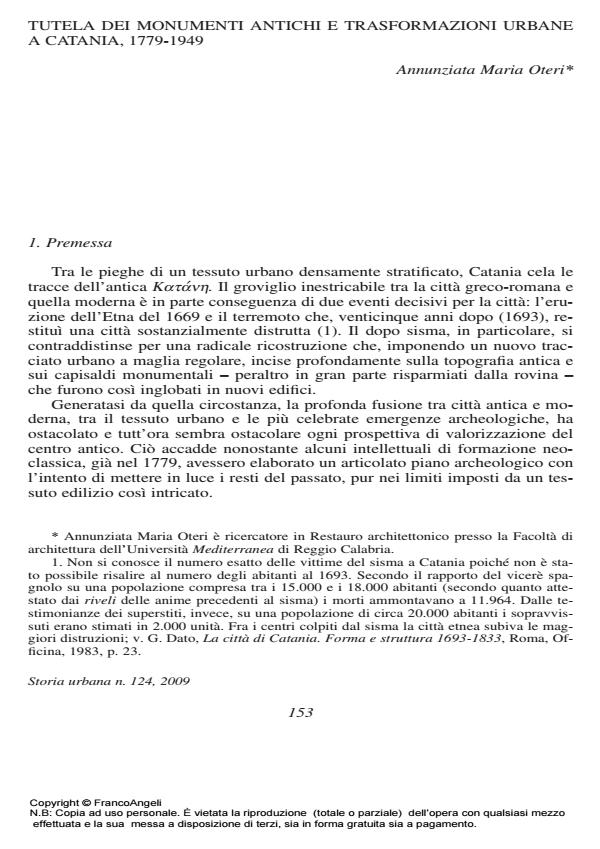Tutela dei monumenti antichi e trasformazioni urbane a Catania
Journal title STORIA URBANA
Author/s Annunziata Maria Oteri
Publishing Year 2010 Issue 2009/124
Language Italian Pages 34 P. 153-186 File size 7211 KB
DOI 10.3280/SU2009-124006
DOI is like a bar code for intellectual property: to have more infomation
click here
Below, you can see the article first page
If you want to buy this article in PDF format, you can do it, following the instructions to buy download credits

FrancoAngeli is member of Publishers International Linking Association, Inc (PILA), a not-for-profit association which run the CrossRef service enabling links to and from online scholarly content.
"Nel corpo della città". Protection of ancient buildings and urban transformations in Catania (1779-1958) Catania, earthquake, reconstruction, ancient buildings, urban recovering programs The eruption of Mount Etna in 1669 and an earthquake that destroyed Catania in 1693 were both significant events for the future of Catania ancient buildings. After the earthquake in particular, the need for radical reconstruction imposed a new, regular, urban plan which did not consider the ancient topography of the city nor its most important buildings. Most of these buildings were not destroyed and were incorporated in new constructions. This confused mixture between the early 18th century urban plan and the most celebrated archaeological structures, which arose from the then existing circumstances, hindered, and still hinders - in spite of all efforts - every attempt to create an urban archaeological park. In the case of the "city of Etna" public intervention on ancient buildings was, at times, radical. In many cases, for instance, some 17th century structures, close to ancient structures, were demolished, thereby "freeing" the original structures. However this work was not systematic even if sometimes had a deep impact on the urban plan. While many structures were "freed" they were, and continue to be, extremely difficult to access. This method of "archaeology in town" was widespread. In fact, in spite of great progress in archaeological research, there were not significant urban programs addressed to recovering the Greek-Roman city as a whole but only its most important individual structures
Annunziata Maria Oteri, Tutela dei monumenti antichi e trasformazioni urbane a Catania in "STORIA URBANA " 124/2009, pp 153-186, DOI: 10.3280/SU2009-124006